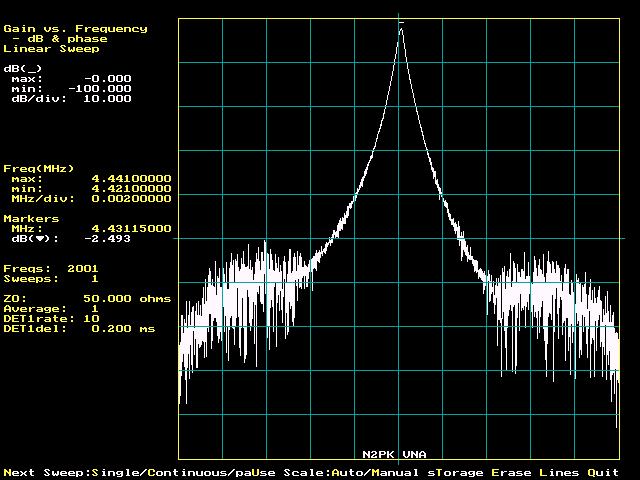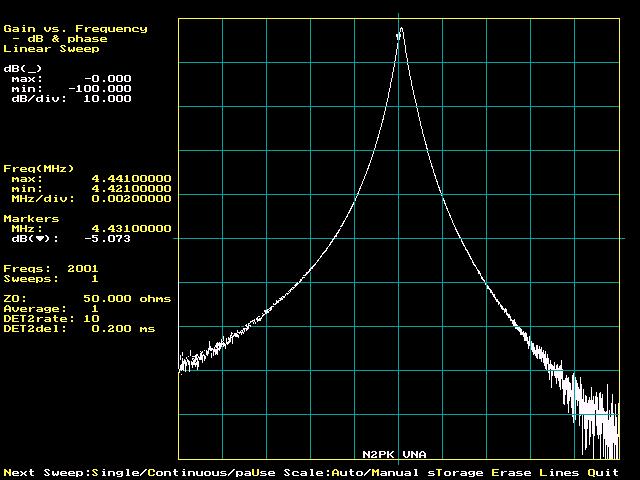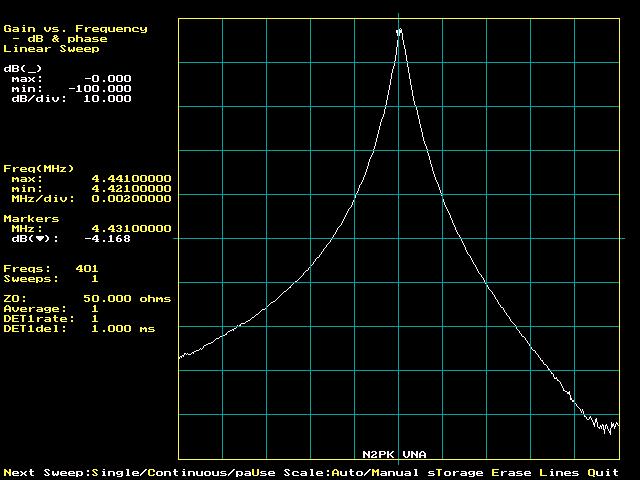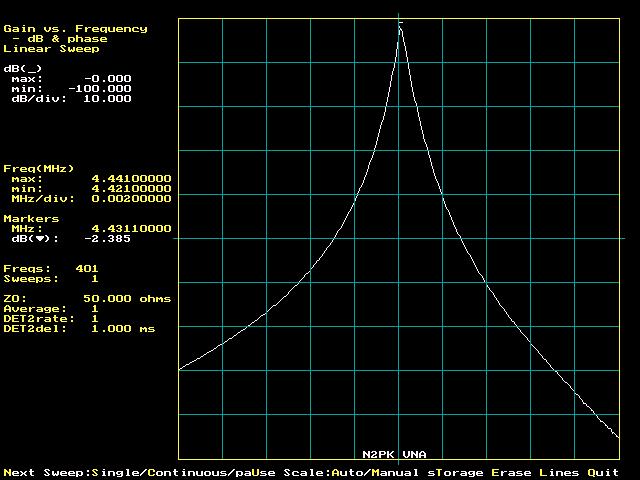VNA Transmission Tests
- A narrowband 4.431 MHz filter was swept for insertion loss using a VNA equipped with a Fox JITO-2 master oscillator and another VNA equipped with the Valpey Fisher master oscillator.
- All sweeps were done over the same +/-10 kHz window approximately centered on the filter passband.
- Each of these VNAs has a detector equipped with a new fast LTC2440 ADC, currently in beta test.
- The LTC2440 ADC is capable of ten conversion rates. New software, also in beta test.allows the user to select the conversion rate.
- The oscillators are compared for noise floor using the fastest and slowest ADC conversion rates.
- All plots have the same frequency window and 0 to -100 dB vertical scale.
- Data averaging was not used.
- VNA dynamic range is degraded by about 30-35 dB at the fastest ADC conversion rate with the JITO-2 and an estimated 15-20 dB at the slowest ADC rate, both rates without averaging.
- This loss in dynamic range will affect transmission measurements more than reflection (impedance) measurements which don't typically utilize the full dynamic range.
- While not shown here, a test of the 4.431 MHz filter while averaging 10 ADC readings resulted in a 7 to 10 dB improvement in dynamic range at the fastest conversion rate. However, averaging dramatically increases the test time.
- Exceptional reflection test cases might involve an active narrowband DUT which requires an attenuated input level to maintain linearity. In such a case, the poorer JITO-2 phase noise may degrade measurement accuracy at the higher ADC conversion rates. However, such a DUT would seem unlikely.
- The degraded phase noise due to the JITO-2 master oscillator would likely preclude certain ancillary uses of the VNA such as IP3 and MDS testing.
The extent of VNA dynamic range degradation with very poor master oscillator phase noise was not anticipated when I wrote in Part 2:
"The master oscillator clocks both DDSs at the same times, every 6.74 ns approximately, in essentially lock-step fashion with the same jitter applied to both DDS outputs. Conventional VNA testing depends on relative phase, and relative phase between the two DDSs is preserved, given the various operative time constants generally encountered. The only exception that I can imagine would be a test of an extremely narrowband filter. Even that seems unlikely given the 5 Hz detector bandwidth."
The most severe degradation occurs where the ADC digitally controlled bandwidth is opened up to accomodate the higher ADC conversion rates.
What was essentially overlooked here was the fact that the master oscillator phase noise, as scaled to the DDS outputs, acts in combination with the offset passband of a narrowband DUT to magnify the phase noise of the RF DDS passed to the detector relative to the desired response - i.e. when the DDS frequency is not in the DUT passband. This noise response is also increased due to the wider digital (and analog) bandwidths when the ADC is running at its faster conversion rates (about 6 kHz noise bandwidth @ the fastest rate).




